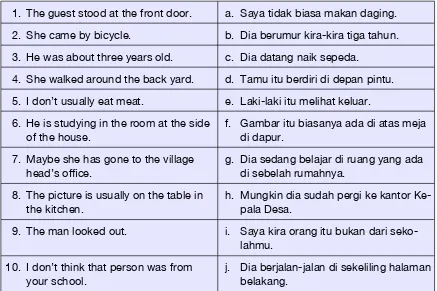The Indonesian Way
Module 2 – A Visit from a Census Official
George Quinn & Uli Kozok
“The Indonesian Way” by George Quinn and Uli Kozok is licensed under a Creative Commons
“Attribution-NonCommercial-ShareAlike 4.0 International (CC BY-NC-SA 4.0)” license.
Under the license you are free to:
●
Share — copy and redistribute the material in any medium or format
●
Adapt — remix, transform, and build upon the material
Under the following terms:
➢
Attribution — You must give appropriate credit, provide a link to the license, and
indicate if changes were made. You may do so in any reasonable manner, but not in
any way that suggests the licensor endorses you or your use.
➢
NonCommercial — You may not use the material for commercial purposes.
➢
ShareAlike — If you remix, transform, or build upon the material, you must distribute
your contributions under the same license as the original.
Please note that the license covers the text and the sound files, but excludes the illustrations.
Date of Last Revision: 23 May 2015
The development of “The Indonesian Way” was sponsored by grant P017A090375-10 from the US Department of Education, International Research and Studies Program.
